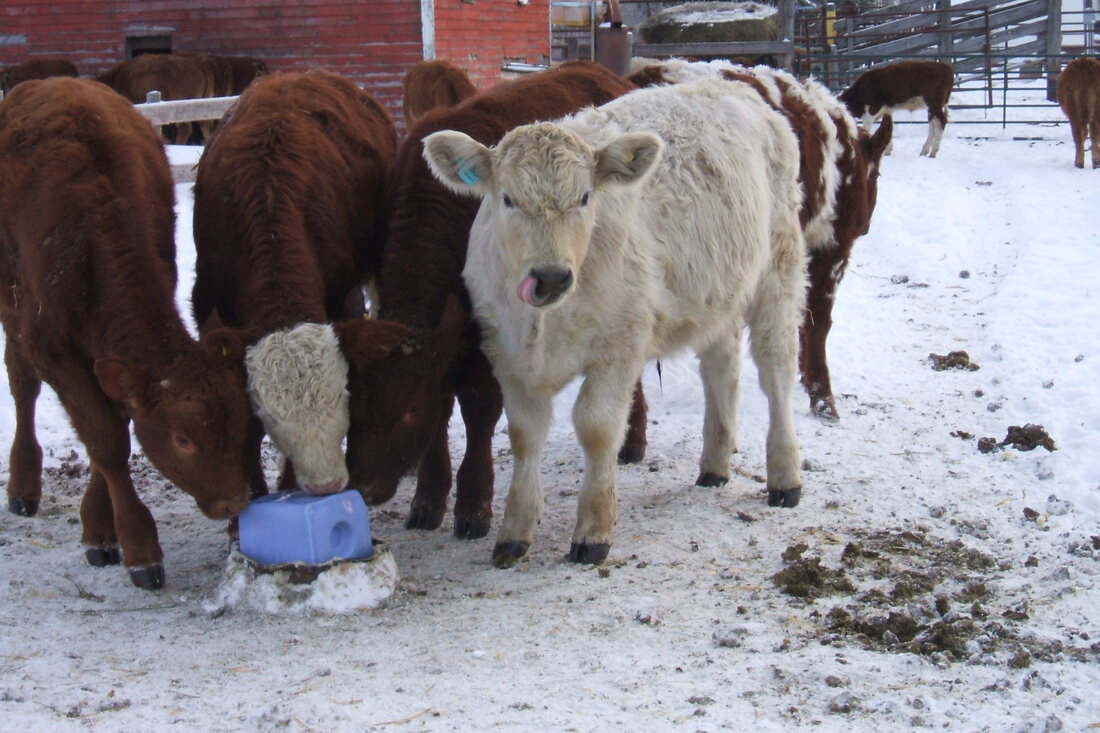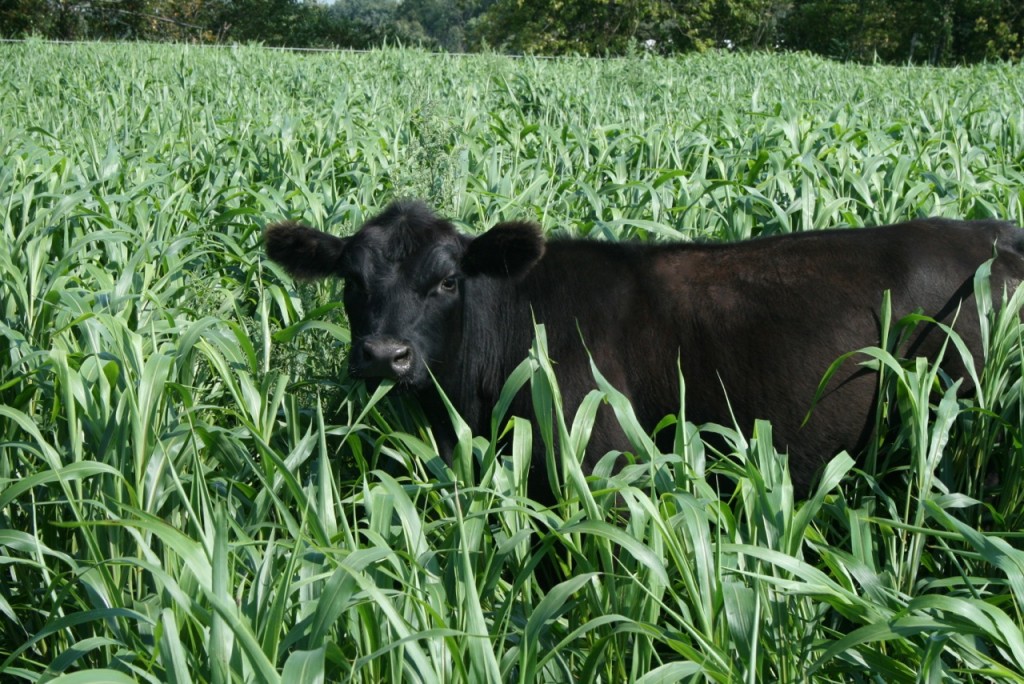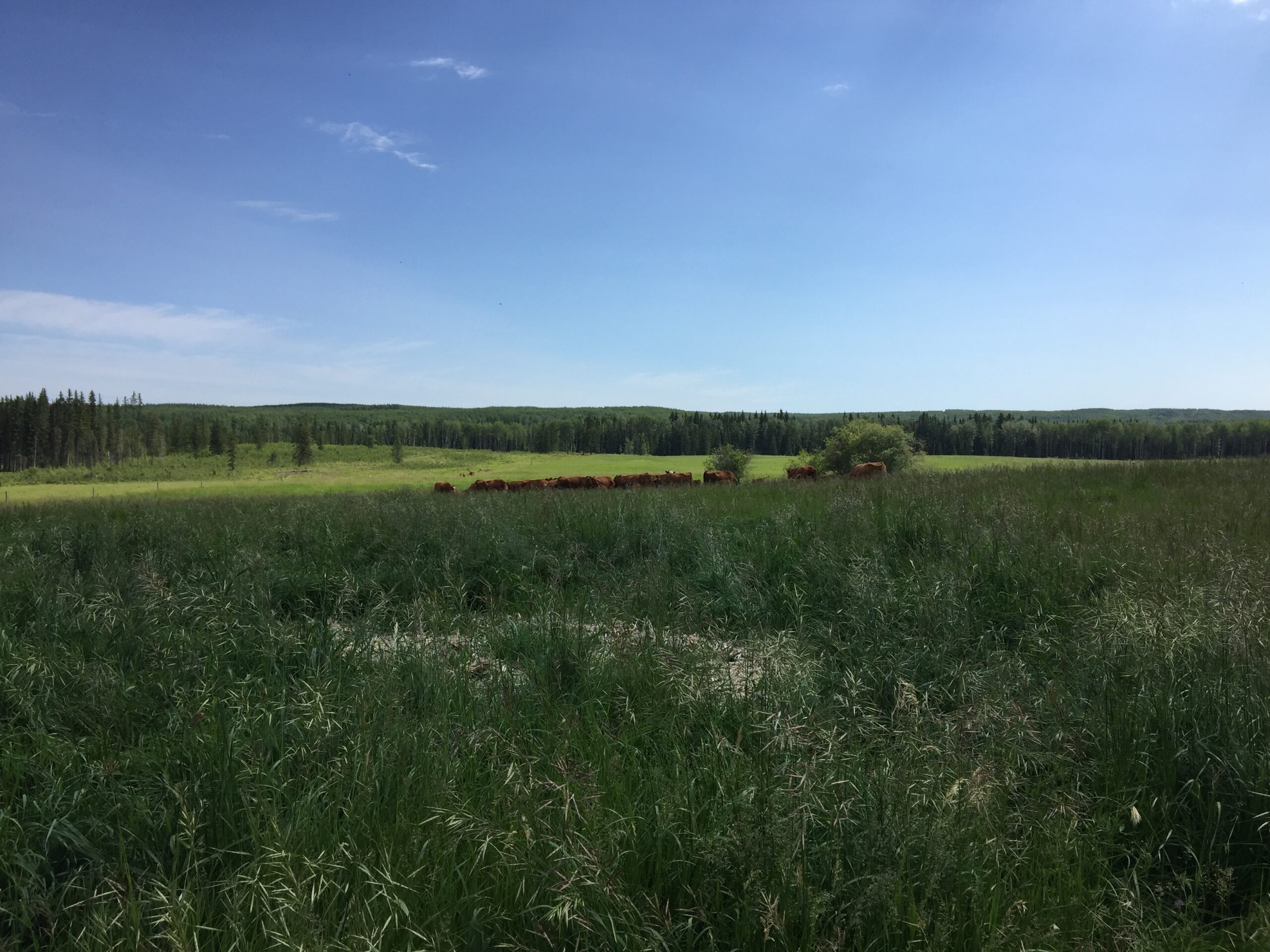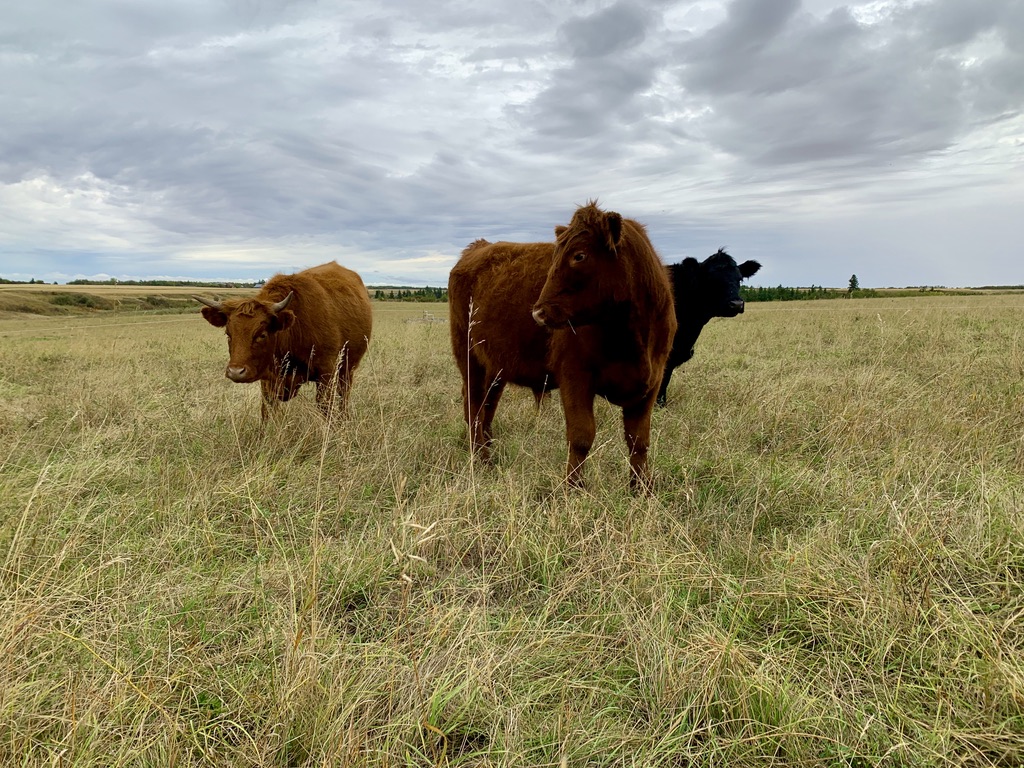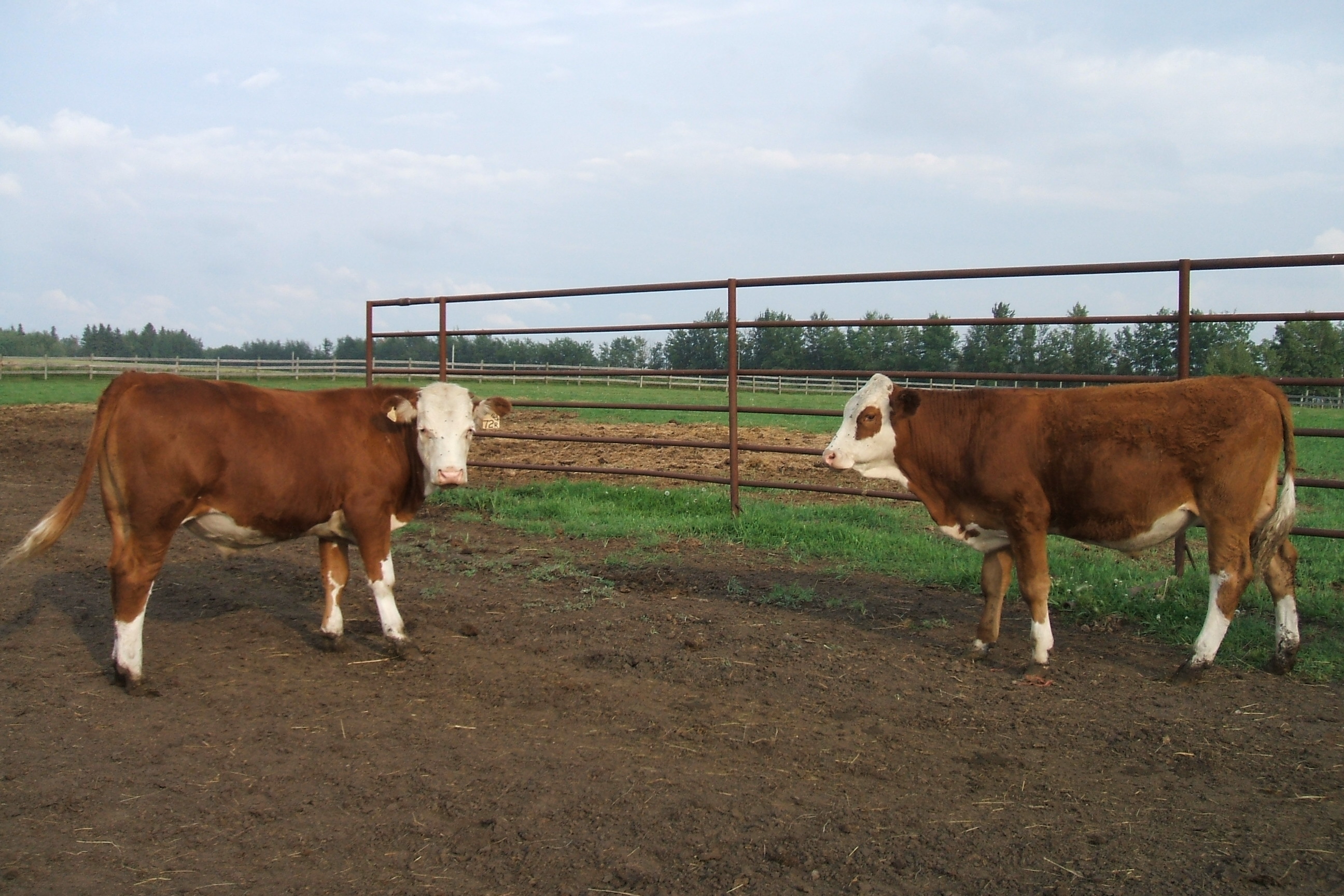HOW RUMINANT DIGESTION WORKS
HOW DO RUMINANTS GET VITAMIN B12
Vitamin B12 is important for iron absorption and brain health. Ruminants are unique in how they obtain this important vitamin for their health.
Here to Bust Myths & Misinformation…
The following is taken directly from the article Is It True That Cows Need Supplemental Vitamin B12?
There’s a common misconception about how ruminants get Vitamin B12 that is often repeated as fact. It goes something like this:
In order to maintain meat a source of B12 the meat industry now adds it to animal feed, 90% of B12 supplements produced in the world are fed to livestock.
And then there’s this gem:
Cattle and other grass-eating animals get B12 and B12 producing bacteria from clumps of dirt around the grass roots that they pull up.
Quote source: Rooke, J. 2013 October. Do Carnivores need Vitamin B12 Supplements? Baltimore Post-Examiner.
Finally, this is an argument used regularly against meat:
[Vitamin] B12 in meat is from supplements given to cows… so why not just take [Vitamin B12 as a supplement] directly, anyway?
There are three distinct assumptions made here. First, cows supposedly need to be supplemented with Vitamin B12; second, cows supposedly are regularly and often supplemented with Vitamin B12; and finally, meat comes from animals that were directly supplemented with Vitamin B12, therefore, it’s better to “cut out the middleman” by not eating meat and taking Vitamin B12 supplements directly instead. It supposedly “saves animals’ lives.”
Unfortunately for the anti-meat people, there’s just a tiny element of truth in these statements. That’s about it.
Let’s explore more to find out why.
Do Ruminants Need Vitamin B12?
Vitamin B12, as a water-soluble vitamin, is important for metabolizing nucleic acids as well as fats and carbohydrates. Primarily it plays a role in purine and pyrimidine synthesis, transfer of methyl groups, and protein formation from amino acids. Other general functions of B12 are in the promotion of red blood cell synthesis and in maintaining the integrity of the nervous system. Vitamin B12 also helps in the synthesis and formation of methionine, one of the essential amino acids, as an important cofactor. Plus, the vitamin contributes to the normal formation and utilization of folic acid (vitamin B9). Vitamin B12 is stored in the liver where it’s slowly released and used by the body, being continually replenished, over time.
This vitamin is produced in the presence of the mineral element Cobalt (Co). They are basically synergistic: one cannot exist without the other. Any deficiencies that occur as a result of vitamin B12 (also called cobalamin) insufficiencies in the diet are only secondary to a more serious cobalt deficiency. In other words, while deficiency symptoms of cobalamin and cobalt are the same, a deficiency in cobalamin is a direct result of a deficiency in cobalt; never vice versa.
Therefore, where cows need vitamin B12 is where they need cobalt. There is a notable exception to this rule where vitamin B12 alone can show deficiencies in livestock, as I will explain below.
How Important is Cobalt for the Ruminant?
Cobalt is required in a ruminant’s diet for the synthesis of cobalamin. This mineral is an important part of the structure and properties of cobalamin, plus it’s the primary mineral that aids rumen microorganisms–largely bacteria–in synthesizing cobalamin, as well as their growth.
As a result, rumen microbes rely on a dietary source of cobalt so that they can basically “make” Vitamin B12 for the cow.
Rumen microbes rely on something called the “intrinsic factor“, a glycoprotein that is derived from the degradation of non-protein nitrogen sources (such as urea or ammonia) or other proteins, so that cobalamin can be absorbed. Without the intrinsic factor, ruminants can experience vitamin B12 deficiency. Most cobalamin absorption occurs in the first part of the bovine small intestine (the duodenum).
The presence of a lot of Co in the diet can cause rumen microbes to create more vitamin B12 analogs than cobalamin, the former of which are utterly useless to the bovine. Cobalamin is the only molecule that has the biological activity necessary for absorption, out of several other analogs that rumen microbes are capable of synthesizing.
Therefore, cobalt is the very reason why ruminants don’t normally need a dietary (nor supplemental) source of vitamin B12.
Who said that B12 and Cobalt serve different purposes? As already mentioned, cobalt is required by ruminants for the production of B12. If a ruminant is denied sufficient Co, then she will also be denied her equally necessary B12.
Unfortunately, cattle–as is the case with most ruminants–are not the most efficient users of cobalt:
- On average, between 3 to 13% of dietary cobalt is converted into cobalamin;
- Only 1 to 3% of the vitamin B12 synthesized in the rumen is absorbed in the small intestine.
Fortunately, though, most cobalt gets recycled back into the rumen to be caught by rumen microbes to make more vitamin B12 for the ruminant bovine.
How do Non-Ruminants Compare?
It’s true that no ruminant can make its own vitamin B12: all ruminants need microbes in their rumens to synthesize cobalamin for them. As a matter of fact, no living organism in the taxonomic Kingdom Animalia is capable of synthesizing cobalamin.
If an animal doesn’t have their own special workforce to synthesize cobalamin for them (as is the case with all ruminants, as well as pseudo-ruminants and hind-gut fermentors like horses, zebras, and donkeys), then it must be supplied directly in their diet. This is true for all other animals, from birds to pigs, from tigers to humans.
For these animals, consuming other animals (or their “products” such as eggs or stomach contents) is the primary way of getting sufficient cobalamin. However, animals that are largely herbivorous yet still classify as non-ruminants rely on another method of getting sufficient vitamin B12 they cannot get from their diet, and that is coprophagia or eating their own poop.
Lagomorphs (those in the rabbit family), most rodents, and to a lesser extent nonhuman great apes like gorillas and chimpanzees, all engage in coprophagy which helps them get essential nutrients they couldn’t get with the rest of their diet. Certainly, with these species, the vitamin B12-synthesizing microbes live too far down their digestive tract for these animals to be able to absorb cobalamin without having to resort to coprophagia
But, Don’t Ruminants get B12-Producing Bacteria from Dirt?
The fact that cobalamin-synthesizing bacteria comes from the soil is certainly not wrong. There are innumerable types and species of bacteria that live in the soil, several of which do indeed synthesize cobalamin from the minute quantities of mineral cobalt found in the soil profiles. Scientists still aren’t exactly sure why such bacteria produce vitamin B12 when it’s exceedingly rare for plants or fungi (as in the fungal fruiting bodies which are mushrooms) to use, let alone require, such a vitamin; the best term that’s used for vitamin B12-producing bacteria that are found with such plants and fungi is concomitant–naturally accompanying or associated with. However, according to some recent findings by MIT biologists as reported by Trafton (2007), they suspect that:
…synthesizing B12 may enable the bacteria to withstand “challenges” made by the plants during the formation of the symbiotic relationship.
However, the fact that ruminants get all their B12-producing bacteria from the soil is purely misinformation.
Such statements assume that all pastures are severely overgrazed with so much bare soil in between plants, and grasses so poorly anchored in the soil that they’re easily pulled up by grazing herbivores, that it’s not even funny.
Such conditions are exceedingly rare to find. The only exception is in areas of arid environments where land is severely understocked–or rested for far too long. This is where livestock are poorly managed in that they are allowed to overgraze and be far too spread out to have any kind of necessary trampling, hoof-impact on the dead plant material that is not sitting there oxidizing away.
Most pastures have more than enough plant material–both dead and living–covering the soil surface. Thereby cattle can’t really eat any soil. But this is on cattle pastures. Sheep and horse pastures are usually more severely overgrazed where plants are literally chomped right down to the soil with their roots exposed.
As you can rightly guess, overgrazing is a sign of a management problem, no matter what kind of livestock we’re talking about.
Pasture plants are, more often than not, so well-rooted and well-anchored in the soil that a grazing cow or sheep or horse is incapable of pulling anything up.
Do you want to know what’s better than a sheep, cow, or horse at pulling up plants?
A plow.
The only time cattle have “deliberately” (more like accidentally) pulled up plants when trying to graze is when those plants were very shallow-rooted annuals trying to make a go of it in some very bare-soil feedlot, or some quackgrass was doing its best to spread out its shallow rhizomes in some seemingly prime-opportunity real estate, minus the cattle. These “grass-eating animals” are just interested in eating the green stuff. They violently bob their heads up and down after they bring up a clump with their mouths, just so that they can sever the green leaves away from the bottom half of the plant. The roots, let alone the soil attached, is unattractive to them as food. They’re not pigs!
Regardless, if cattle aren’t able to eat the soil between plants, how do they get their B12 and how do they get the bacteria in the rumen to get B12?
Remember: cattle don’t need direct sources of vitamin B12. All they need is enough cobalt in their diet. I also have already discussed that cattle can readily get enough cobalt in their diet just by eating plants (as in, obviously, the leaves and stems, not the roots).
Plants are more than capable of uptaking minerals into their cells, which then gets consumed by the herbivore. Ruminants grazing in cobalt-sufficient areas will get plenty of cobalt on pastures with a plant species mixture that contains both grasses and legumes like clovers or alfalfa. (It’s important to note here that legumes provide twice the amount of cobalt in their leaves and stems than grasses.)
What about those areas where the soil doesn’t provide enough cobalt to be uptaken by the plants that the animals eat? A cobalt (blue) salt block solves that problem quite easily.
Ruminants don’t need to eat soil to get–nor keep–B12-synthesizing bacteria in their rumens. They get those microbes when they are young–just before their rumen reaches maturity–from a variety of sources, from their mother’s milk (and the rich bacterial culture sitting on the teats), to what they’ve eaten their entire lives. (FYI: bacteria can be found on the surfaces of leaves and stems! No need to eat dirt!)
Can Ruminants Get B12 Deficient?
Yes, ruminants can get B12-deficiency. However, the caveat is not in the lack of cobalamin in the diet. It’s in the lack of Cobalt (Co). There is only one very notable exception, though.
Ruminants may only directly experience a B12-deficiency, cobalt aside, when they are very young. This is because all baby ruminant animals (calves, lambs, kids, fawns, etc.) are not born with a fully functional rumen (nor a reticulum, nor an omasum). Newborns have a tiny pea-sized rumen and a much larger stomach that makes them basically omnivorous at birth. The only way they are able to get sufficient cobalamin is from their mother’s milk. Depending on the species, they are only able to go on full herbivorous meals, with milk on the side, when they’re several weeks to a few months old. That is when their rumens, reticulums, and omasums have fully matured. Up until that point, cobalt supplementation is both unnecessary and unimportant.
For adults then, Vitamin B12 deficiency will only and always closely follow and resemble Cobalt deficiency.
Can Ruminants get B12 Deficient even with Enough Cobalt in their Diet?
Absolutely not.
Dietary cobalt is still the deciding factor in whether livestock are able to get enough vitamin B12 or not. There has been a lot of studies done on this, and all of them have found that as long as cattle were getting enough cobalt in their diet, regardless of what they were being fed, their rumen microbes were able to synthesize enough cobalamin to meet that animal’s needs.
The emphasis on, “what [livestock] were being fed,” is due to what some people have “observed” based on over-simplistic comparisons of forage-fed versus grain-fed. Such people think that grain-fed livestock are more likely to get B12-deficient because such a diet, “would make animals have a lower rate of B12 production.”
In other words, the belief is that grain-fed cattle are not producing enough vitamin B12 in their rumen regardless if they’re getting sufficient cobalt in their diet. This very argument is an attempt to support the reason why vitamin B12 is regularly supplemented to (especially) confinement-raised livestock.
The thing is, such a statement is only based on speculation, not facts. However, it is partly correct.
Studies have shown that high-concentrate diets do certainly reduce the amount of cobalamin that gets synthesized in the rumen. However, this reduction is caused by several factors; not this super-oversimplified notion that being grain-fed is solely to blame for reduced ruminal cobalamin production. Let’s look at forage-fed animals first though.
Two major factors have a lot to do with an increased requirement for cobalt than “usual” for forage-fed livestock; the first factor is purely environmental, where conditions such as heavy rains, soil conditions (which can be influenced by fertilizer applications such as lime which will decrease Co availability in the pasture stand), stage of maturity of the forage plants, plant species, and climate can reduce forage-cobalt concentration and availability to the grazing animal. Secondly, forage diets encourage higher production of B12 analogs that are often antagonistic to the kind of cobalamin that the animal needs. However, all research that has been done and published clearly states that it’s not so much the analogs that are the problem but rather the question of whether these animals are getting enough cobalt in their diet. Period, end of the story.
And how do grazing animals get enough cobalt in their diet? If it’s not by eating plants, it’s with a mineral salt block left out for them.
In regards to ruminants raised in “factory farms” (more properly known as CAFOs or Confined Animal Feeding Operations), they also only need the mineral cobalt to be supplemented in their diet. With feedlot cattle or dairy cattle kept in intensive operations, a well-balanced TMR (total mixed ration) that contains all the required nutrients (protein, energy, minerals [including cobalt], and vitamins) to meet the animals’ productive and maintenance needs is perfect to meet the requirements for vitamin B12. No extraneous vitamin B12 supplementation is necessary.
Therefore, cattle (and other ruminants) that become B12-deficient, regardless of how they’re raised, aren’t just B12-deficient because their rumens aren’t synthesizing enough vitamin B12! No, it’s primarily because those animals are receiving insufficient amounts of cobalt in their diet.
So, Why are B12 Supplements Given to Cattle in the First Place??
The oral or injectable Vitamin B12 (or B-vitamin complexes) are an emergency solution to save an animal’s life. It’s not meant for healthy ruminants that are already getting enough cobalt and synthesizing sufficient quantities of cobalamin to meet their needs.
Cobalt deficiency can be life-threatening. Livestock that are Co-deficient show signs of loss of appetite, reduced growth, loss in weight, and eventually anemia, emaciation, and death. These same symptoms show up with cobalamin deficiency. As discussed above, ruminants only get B12 deficient if they are Co deficient.
A direct administration of vitamin B12 acts a lot faster to reverse B12-deficiency symptoms in cattle than feeding cobalt-mineral. One study showed there was a rapid, overnight improvement in appetite in cobalt-deficient animals. Oral dosing of cobalt showed that it took seven to 10 days for animals to finally gain a healthy interest in eating again. This may not be the case with sheep, however; oral dosing or direct administration with a needle was found to be equal in righting cobalt deficiencies.
Therefore, simply increasing the amount of cobalt in a cobalt-deficient bovine’s diet doesn’t cut the mustard because such a form of supplementation acts much too slowly for the animal to get right back on track to start healing itself again.
Vitamin B12 is “supplemented” to these animals in the form of an injectable. This injectable is injected into the muscle (intramuscular or IM) where it can be quickly taken up in the tissues, and done so once a week until the animal does not need them again (as recommended by a veterinarian), particularly when enough cobalt is already being added to the diet to meet the animal’s needs.
Vitamin B12 can certainly be fed to cattle, but it’s not the wisest thing to do. Cyanocobalamin, the most common, readily available and stable form of artificial vitamin B12, tends to get largely and extensively destroyed by the rumen microbes so that very little of it, if any, gets utilized in a cow’s body beyond the rumen. This logically makes dietary cobalt the most logical (not to mention cheapest) form to supply cattle as a form of cobalamin supplementation… once again, IF the animals are raised in an area that is well known to have cobalt-deficient soils!
Okay, so Where does the 90% of B12 Supplements are Given to Livestock Come From??
With a whole lot more discussed in “Is it True That Cows Need Supplemental Vitamin B12?” the basic answer is due to a gross misunderstanding of ruminant digestive physiology and the feed ration regimen of all livestock animals.
Only one source has made this claim, and the source from where the author pulled this claim is nowhere to be found.
The only element of truth from where that statement is credited is in the production of hogs and poultry for meat, and only in CAFOs. Pigs and chickens must get vitamin B12 directly supplemented in their diets because they don’t have the same kind of digestive tract that a cow does to convert cobalt into cobalamin. Instead, these porcine and avian monogastrics must get their vitamin B12 from dietary sources, such as animal products; if they are not supplied sufficient animal products in their diet, then B12 must also be supplemented in their diet.
Another reason is a serious confusion as to which vitamins are actually (and must be) fed to ruminants; especially in confinement.
The legit vitamin supplements that cattle are receiving in their diet while being housed in the barn or on a dirt lot do not include vitamin B12. These vitamin supplements are vitamins A and E. Vitamin A and E are important nutrients that are commonly found in green, fresh forage. However, they denature and become completely inaccessible to the animal when that fresh green forage dries in the sun and is baled up as hay, or when it is put into an anaerobic environment where it ferments and becomes silage. Vitamin A is important for vision and bone, plus reproduction. Vitamin E is closely tied with the mineral Selenium, both of which are important for muscle development. Vitamin A especially is important to include as an artificial supplement to cattle that are on stored-feed diets. Grazing animals, however, do not need such a supplement.

